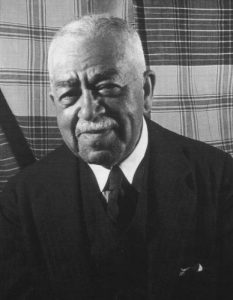Samuel A. Floyd Jr. ‘s “Black Music in the Harlem Renaissance” quotes that “The white show world of downtown New York, where a few black musicians performed and where black shows were also presented, was active, but after hours everyone, white and black, went to Harlem to hear black music.”1
Duke Ellington began his claim to fame starting in 1923, when he moved from Washington D.C. to New York to build his musical career. Within just one year, Ellington became the leader of his own band, which regularly performed at the Cotton Club. By 1930, Ellington and his band were playing all over the country and the world, winning countless awards, including 13 grammy’s and the Pulitzer Prize Special Citation in 1999.2
George Redd’s observations imply that it was the more educated jazz musicians who helped to bring the two camps (white and black musicians) together. He points out that Duke Ellington, Fletcher Henderson, and others presented an image that was acceptable to the intellectuals. Ellington’s dignified bearing, his aristocratic flair, and his self-assurance in any company exemplified the New Negro, in and outside the jazz world.”1
And that is exactly what Ellington did. By the mid 1920s, Duke Ellington already established himself and his jazz orchestra as highly successful contributors to black music. But how could black composers further expand their brand while continuing to experience the inequalities of living compared to white people? One way that Ellington did so was by composing for a predominantly white profession: symphony orchestras, operas, and theatrical productions.
“Ellington and his peers used jazz not only to satirize white culture but also increasingly to parody the music itself thus shifting its direction from swing to bop.
Ellington reflected through his music the social and cultural changes that occurred as more African Americans were able to gain greater personal autonomy free from interference by white society.3
Ellington’s three-movement suite titled Black, Brown and Beige“ presents historical narratives of the nation. Black, Brown and Beige, a “tone parallel” to black history as Ellington describes, “uses sounds and themes associated with jungle style but recontextualizes their musical and racial meanings in ways that transform the style’s primitivist codes. The work’s three movements represent the monumental moments and movements in African American historical memory: slavery, emancipation, and urbanization in the northern metropole.4
During the same time period, a man by the name of Harry T. Burleigh was also a leading contributor to bridging the gap between black society and musicians to the white society and classically-trained musicians by composing and intertwining spirituals into the classical music tradition. Burleigh’s new ideas, however, got loads of backlash, as segregation still played a major role in American society at the time.
Van Vechten often made critical comments on Burleigh’s arrangements: “White singers have been attracted to Mr. Burleigh’s arrangements, because they include many of the ‘tricks’ which make any song successful, while the accompaniments are often highly sophisticated.”
Van Vechten claimed, when discussing the arrangements of Harry Burleigh, that Harlem Renaissance musicians should base their work on the twentieth-century music of the South. If they really wanted to preserve the spirituals, they should go to the South and do their own fieldwork. Philosopher, arts patron, and friend of Van Vechten also made strong jabs at people like Ellington and Burleigh, claiming that “the proper idiom of Negro folk song calls for choral treatment” and that Black musicians who were “in vital touch with the folk traditions of Negro music” were “in commercial slavery to Tin Pan Alley and subject to the corruption and tyranny of the ready cash of our dance halls and the vaudeville stage.” On the other hand, musicians (like Burleigh and Ellington), who had formal training, were in his opinion “divorced from the people and their vital inspiration by the cloister-walls of the conservatory and the taboos of musical respectability.”5
Regardless of the critics of the 1930-1940s, what Burleigh and Ellington did was create strides for racial equality through music. Ellington and his Orchestra will go down as one of the most influential musical groups in American history, not entirely for their catchy compositions, but for the impact they had on giving minorities a voice to make careers in whatever field they want, even with the backlash they often received from a predominantly white nation.
“What we could not say openly, we expressed in music, and what we know as ‘jazz’ is something more than just dance music.” – Duke Ellington3
1 Floyd, Samuel A. “Chapter 1: Music in the Harlem Renaissance, An Overview, Samuel A. Floyd Jr.” Essay. In Black Music in the Harlem Renaissance a Collection of Essays. Knoxville: The University of Tennessee Press, 1993.
2 “Duke Ellington.” Duke Ellington | Songwriters Hall of Fame. Accessed October 30, 2023. https://www.songhall.org/profile/Duke_Ellington.


